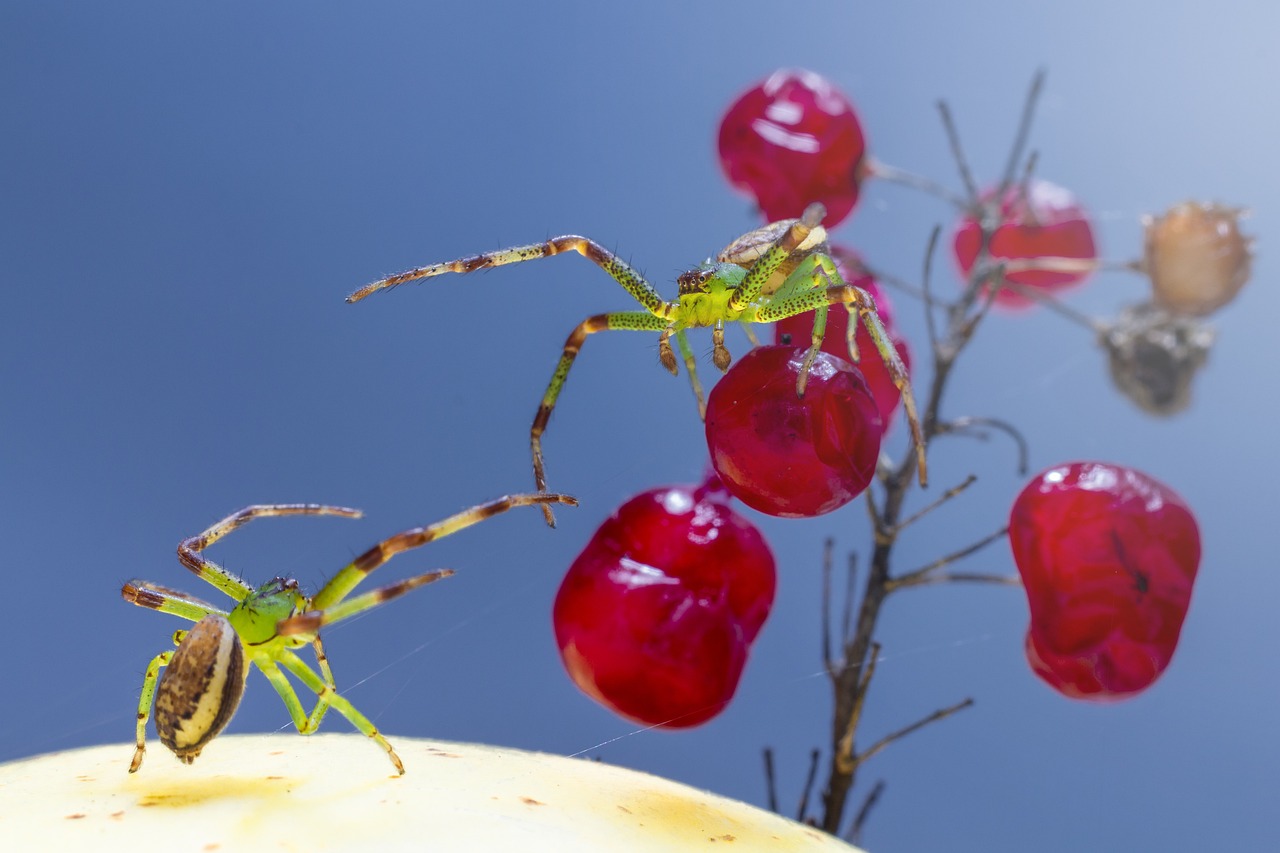The Green Crab Spider (Diaea dorsata) is a fascinating arachnid belonging to the family Thomisidae, known for its ability to blend into its surroundings and its distinctive coloration. Here’s an overview of this species:
Appearance
- Size:
- Females: Larger, with a body length of about 6-8 millimeters.
- Males: Smaller, with a body length of about 3-4 millimeters.
- Coloration:
- Body: Generally bright green, which helps them camouflage among leaves and vegetation.
- Markings: May have some brown or reddish markings on the abdomen. The cephalothorax is usually a uniform green.
Habitat
- Preferred Habitats: Found in a variety of environments including forests, woodlands, gardens, and shrublands. They often inhabit the foliage of trees and bushes.
- Geographic Range: Widely distributed across Europe and parts of Asia.
Behavior
- Web:
- Green crab spiders do not spin webs to catch prey. Instead, they rely on their camouflage and ambush tactics.
- Feeding:
- Diet: Insects, especially pollinators like bees and flies, which they ambush while they visit flowers.
- Hunting: They remain motionless and wait for prey to come close, then quickly grab and immobilize it with their strong front legs.
Life Cycle
- Eggs:
- Females lay eggs in a silk sac, which is often hidden within leaves or under bark.
- Spiderlings:
- After hatching, spiderlings disperse to find suitable habitats. They remain close to the ground or on vegetation initially.
- Adults:
- Undergo several molts before reaching maturity. Adults are typically seen during spring and summer.
Identification Tips
- Distinct Markings: Look for the bright green coloration which makes them distinct among other crab spiders.
- Camouflage: Often found on green leaves or plants, blending seamlessly with their surroundings.
Ecological Role
- Pest Control: As predators of various insects, they help control pest populations.
- Food Web: Serve as prey for birds, lizards, and other larger predators.
Conservation Status
- Population: Generally stable with no significant threats.
- Threats: Habitat destruction and pesticide use can impact local populations.
Conservation Efforts
- Habitat Preservation: Maintaining natural areas and reducing pesticide use helps support their populations.
- Gardening Practices: Encouraging diverse plant life and avoiding chemical treatments in gardens can provide suitable habitats for these spiders.
Human Interaction
- Beneficial: These spiders are beneficial in gardens due to their role in controlling insect populations.
- Bites: Generally not harmful to humans. Bites are rare and only occur if the spider feels threatened.
Summary
The Green Crab Spider (Diaea dorsata) is a remarkable species known for its bright green coloration and effective camouflage. Widely distributed and beneficial for controlling insect populations, these spiders play an important role in the ecosystem. Recognizable by their distinctive green appearance and ambush hunting tactics, Green Crab Spiders are an interesting and valuable part of the natural world. By maintaining natural habitats and adopting spider-friendly gardening practices, we can support the populations of these fascinating arachnids.
Views: 1868
